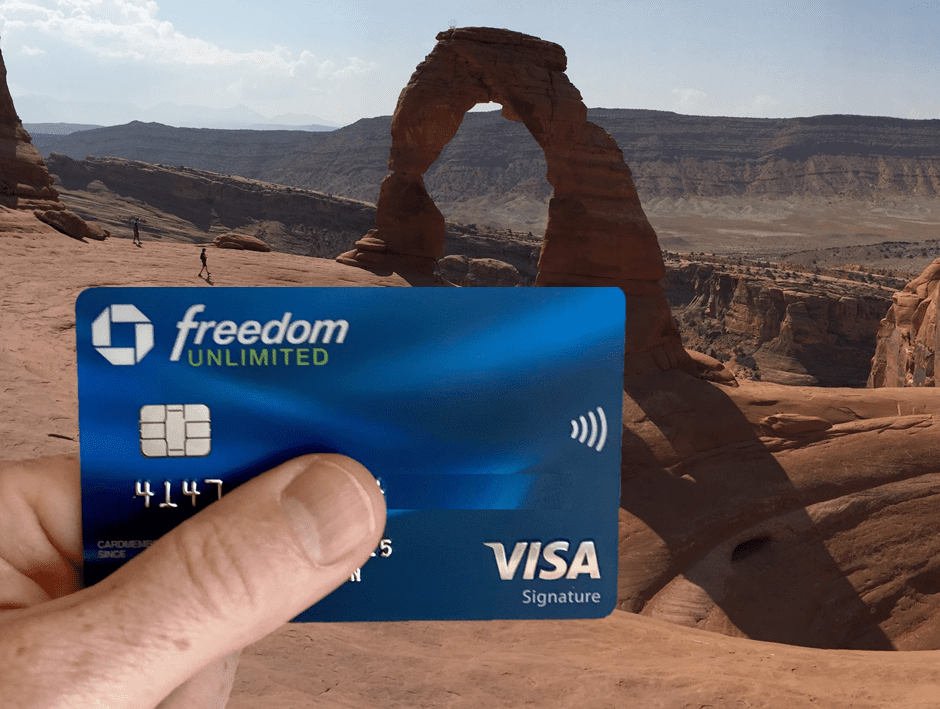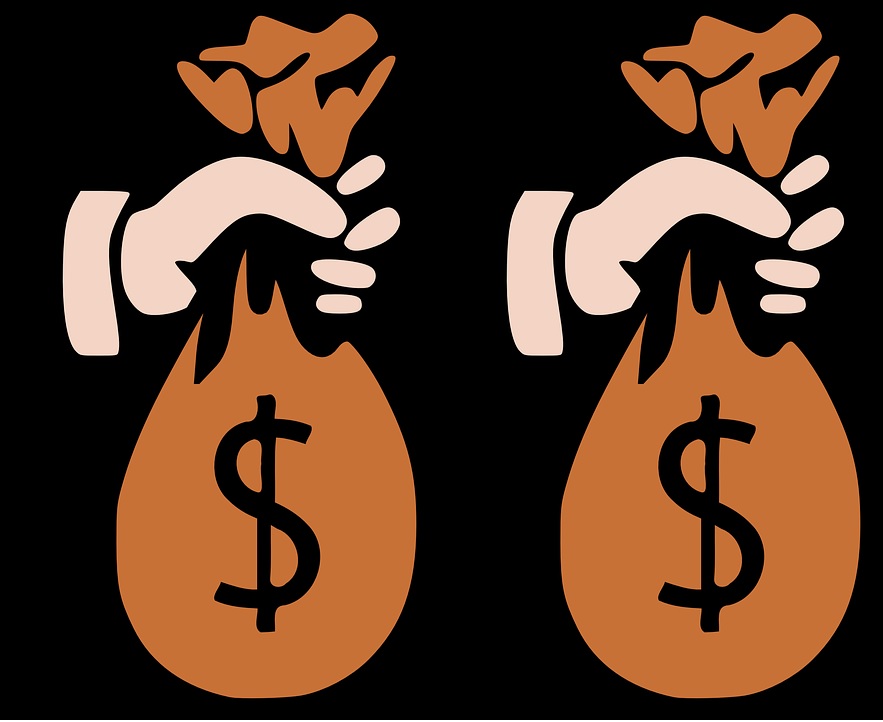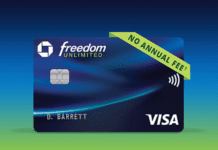Update: The 3x everywhere offer has now expired.
~
Yesterday, a member of our Frequent Miler Insiders group pointed out that the welcome offer on our site (at least at the time of writing) on the Chase Freedom Unlimited is good for “an extra 1.5% back everywhere” (essentially 3x everywhere for the first year on up to $20,000 on purchases), but they lamented that the referral offer isn’t the same (presumably they were looking to refer from Player 1 to Player 2 or vice versa). That led to some internal debate on the Frequent Miler team about which new cardmember offer for this card is “better”. I think the answer will be obvious for many — which is not to say that everyone agrees on which is obviously “better”.

The Refer-a-Friend offer: $200 back (20,000 Ultimate Rewards points) after $500 in purchases

Chase offers the ability for existing cardholders to refer a friend to become a cardholder (and in some cases, it is possible to refer new cardholders to one of several cards within a card family).
At the time of writing, eligible Chase Freedom Unlimited cardholders can go to the Chase Refer a Friend site to log in and generate a link to refer friends and family to open a Chase Freedom Unlimited card.
For instance, when I log in with my Chase Freedom Unlimited and I generate my referral link, that link offers the applicant the ability to earn a bonus of $200 after making $500 in purchases within the first 3 months from account opening. That $200 bonus is actually awarded as 20,000 Ultimate Rewards points. Under the referral offer, the card earns its normal category bonuses — 3x on dining and pharmacy purchases, 5x on travel booked through Chase Travel℠, and 1.5x everywhere else.
The key with this offer is the low spending requirement. While the bonus is still relatively small when compared to other cards that earn Chase Ultimate Rewards, one only needs to reach a minimum of $500 in purchases within 3 months to earn the bonus with the referral offer. That’s a relatively easy amount of spend even for those with limited expenses.
If you’re playing in two-player mode, it gets a bit better yet. For instance, if I referred my wife and she was approved, I would get a $50 referral bonus (awarded as 5,000 Ultimate Rewards points). That’s a total of 25,000 Ultimate Rewards points between the referral bonus for Player 1 and the new account bonus for the new cardholder. Again, that’s the return on only $500 in spend with this offer.
An extra 1.5x on all purchases for a year up to 30K extra points
The currently welcome bonus listed on our Best Credit Card Offers page (at the time of writing) is good for an additional 1.5% cash back on all purchases for the first year up to an additional $300 cash back. More practically speaking, that offer earns an extra 1.5 points per dollar on all spend up to $20,000.
If you were to do all of your spend in an unbonused category, you’ll essentially earn 3x everywhere on up to $20K spend — that’s the 1.5x base earning rate + the additional 1.5x bonus points per dollar spent. If you spent the entire $20,000 on unbonused purchases, you’d end up with 60,000 total Ultimate Rewards points — that’s the 30,000 base points earned on $20,000 in purchases plus an additional 30,000 points.
- $20,000 in purchases x 1.5x base earning = 30,000 points
PLUS - $20,000 in purchases at 1.5x bonus points per dollar spent = 30,000 points (additional)
In other words, that offer yields up to 30,000 bonus points. However, earning those 30,000 bonus points requires big spend.
Which offer is better?
We’ve listed the offer for an extra 1.5% back listed on our Best Offers page. The general rationale there is that we have assumed that someone pursuing the card would like to earn as many bonus points as possible. For someone with a good deal of otherwise unbonused spend, the chance to essentially get 3x points on up to $20,000 in purchases sounds pretty good. Someone spending on a home remodel or a large tax bill might consider a total of 3x to be superior to the everyday earn on most other cards.
However, on the other hand, one has to consider that $20,000 is a lot of spend to earn a bonus of only 30,000 total bonus points. Many credit cards on our Best Offers page feature opportunities to earn far more points with far less spend. Even if you only want to open one credit card, it wouldn’t be hard to open one where the welcome bonus would yield upwards of 60,000 or 80,000 or even 100,000 points or more with far less than $20,000 in purchases.
Perhaps a more important comparison point is between the total numbers of bonus points as compared to spend. If you open the card under the referral offer, you’ll earn 20,000 bonus points with just $500 in spend. In order to earn 20,000 bonus points with the “extra 1.5% back” offer, you would need to make $13,333.33 in purchases. Note that you would end up with a total of 20,000 points from the ordinary 1.5x base earning rate and also 20,000 bonus points based on the additional 1.5x.
An important point is that you should not think of the “bonus” as being 3 points per dollar. Since the card ordinarily earns 1.5x on all purchases, the bonus points (or extra/additional points) are only the additional 1.5x.
The moral of the story here is that if you would spend less than $13,333.33 on the card int he first year, you would come out ahead with the referral offer for 20,000 points after just $500 in purchases.
To demonstrate that more clearly, imagine that you opened the “extra 1.5% back everywhere” offer and you spent $13,000 on the card. You would earn a total of 39,000 points:
- $13,000 x 1.5 base earn rate = 19,500 points
- $13,000 x 1.5 bonus points for 1 year on up to $1K spent = 19,500 bonus points
- Total = 39,000 points
Instead, imagine you opened the $200 back on $500 offer and you spent the same $13,000:
- $13,000 x 1.5 base earn rate = 19,500 points
- Welcome bonus: 20,000 points after $500 in purchases = 20,000 points
- Total: 39,500 points
- Note that if your significant other referred you, they would also earn 5,000 additional points from the referral.
As you can see, you’d be better off putting $13,000 in purchases on te card under the “$200 back” offer.
The math changes as you exceed $13,333.33 on your way to $20,000 in purchases. Big spenders would do better with the “extra 1.5x” offer. At the top end, $20,000 in purchases would yield a total of 60,000 points (30K base + 30K bonus.
The group member who posted about this card went on to update later saying that despite the fact that the referral offer could be pretty good, they were still considering the 3x offer since they had some big upcoming spend.
However, that group member had been looking to make a referral for their “Player 2” (spouse/partner/significant other). In that scenario, I think the math more heavily favors the referral offer. Consider this:
- Player 1 refers Player 2 and earns 5,000 points
- Player 2 earns 20,000 points after $500 in purchases with the referral version of the new cardmember offer
- Total household points = 25,750 (including 750 points earned from $500 in purchases)
Opening the “extra 1.5x” offer would mean at maximum earning an additional 4,250 points (since the maximum bonus points from that offer is 30K) — but consider that you’d have to make an additional $19,500 in purchases ($20K in total purchases) to reach 30K bonus points!
Personally, if I was in their shoes, and assuming that I had $20,000 in upcoming expenses, I’d likely follow the referral path, picking up 25,000 total points with $500 in spend and then use the remaining $19,500 in expenses to earn another welcome bonus or two or three.
Keep in mind though that if a business card were an option, one could earn far more Ultimate Rewards points with the very similar (but slightly different) Chase Ink Business Unlimited card with less spend, albeit in a shorter time window rather than being spread over a year.
Which offer should be the best offer?
Putting aside for a moment whether your personal situation is better match for $500 in spend or $20,000 in spend spread over a year, which is the objectively better offer for readers?
It’s not necessarily as obvious as it sounds. While those who have the capacity for $20,000 in purchases in a short timeframe have a number of attractive business credit card bonuses to consider, others won’t consider business credit cards and may only spend $20,000 over the course of 12 months and may not be able to spend a large amount within a short timeframe. Still, $20,00 in purchases spread out over a year’s time is an average of $1,667 in purchases per month. A person with that level of spend could probably earn a decent welcome bonus every 3 months for the next year and far outpace 30,000 bonus points. On the flip side, some people don’t want to open a new card every few months and would be happier opening a single card with good return on spend everywhere.
In the end, I think it really comes down to whether you have big upcoming purchases and how much you value the Ultimate Rewards points vs whatever your next best alternative might be and whether or not you have the ability to refer within-household (the additional 5,000 bonus points make a noticeable difference in the math).
Still, I’m curious to hear readers’ opinions: Which should be the “best” offer? Let us know in the comments.





calculate this:
apply for referral offer p1 earns 5,000 points
P2 spends $500 on Freedom Unlimited gets 20,750 points
put the rest of the $19,500 on a random 2x card and earn 39,000 points
total 64,750
i think this makes it clear which offer is better
As a regular churner, I always sort offers by return on spend.
For friends and relatives not into this hobby, I often just point to the highest points bounty because I know they will not open another card.
The real best play is to wait for the Chase Freedom $200 + 5X on grocery and gas for a year or 10X on grocery for a year offers to come back. That still gets you the $200 (20K points) for $500 spend but gives you a really good grocery or gas multiplier for the year on a no AF card, and it stacks for a Freedom Flex (meaning you get a quarter of 9X grocery and 9X gas, or 14X grocery). Put your un-bonused spend on another card.
200 for 500 is a vastly superior offer. That is a an 80% ROI on $500 spend (valuing chase points at 2 cpp). And then you have 12k of more spend to use on other SUBs. The only way that the extra 1.5 points makes sense if you are insistent on spending that 13k on this specific card and too lazy to open up other cards.
This isn’t even a close comparison really. You have to compare the opportunity cost of the spend above the $500 of the simpler offer. Your rankings pages do that by assuming an opportunity cost of 3%, but really how this shakes out is you have to spend $19500 to earn a marginal 10,000 points.
If you want to argue someone who has that kind of spending would benefit from the offer then really they should be looking at ccs with that level of spend requirement and not messing around with this (capped) 3x offer.
There’s just no world in which anyone should be signing up for that over cards unless they’ve literally signed up for every other available card and have nearly unlimited capacity to spend. Whereas even a hard core churner could justify picking up the 20k for $500 offer, not to mention someone who is less into the game.
Do I recall correctly that the additional 1.5% posts after the year-long earning period is finished, even if all the spend is done in the first month? If so, it becomes a choice between 25,750 points now (almost) or 30,000 points in a little more than a year.
Your card rankings implicitly try to minimize hard credit pulls by listing offers by total value. This gives a bias toward high spend offers, even with your 3% opportunity cost adjustment. But that’s ok since most churners are trying to get the most per offer and can manufacture spend.
But you should have another set of rankings that turns everything into %cashback terms to see which offers give you the highest return per dollar spent.
I think the readership extends well beyond people who are doing manufactured spend, and I think the idea of calculating a second return number for each offer is very interesting. Perhaps dividing the first-year value by the required spend? So $1,250 value on $10,000 spend would give a “reward index” of .125 or 12.5 percent or something?
Exactly. Ideally you’d also be able to sort by that metric, or have a link to a ranked list.
I would love this to be an official feature.
I don’t think FM has many “I never want to open credit cards” readers, but I do think there are a sizable number of “I do minimal or no MS” readers. I’m included in that – I’ll do the easy big plays like opening a USB Biz Checking with a $3K deposit from a credit card, or paying taxes/insurance/tuition with a credit card for a small fee, or buying third party GCs at grocery and office stores that I can use easily where I would spend it anyway (Amazon/Target/Disney – which have very good apps for managing their gift cards). I won’t do money orders and have no interest in acquiring oodles of VGCs because of that.
I prefer looking at new card spending offers as multipliers on base or category spend, since a majority of our spend is organic. This often puts the personal card offers as the best ones since the returns are better than the high business spend requirements, and sometimes the lower point bonus can be a better deal. A few examples below:
For someone with more limited spending the lower spending requirement Biz Gold offers are actually better than the higher 200K and 250K AMEX Biz Gold and Plat offers.
Right now there is also a public offer on Chase’s website for $250 back (25k UR) for $500 spend. So for those who don’t have a P2 to refer them that is a good option to still get 25k total on minimal spend.
I have high monthly prescription meds bills. So between that, the 4.5% on dining and the 3x everywhere, I’ll easily meet the $20k spend in a year. And lets not forget the 14 month (from day of approval) 0% financing which is part of the Freedom Unlimited. All of this makes the card a no brainer to get, especially since I don’t see any new cards for me or P2 in the foreseeable future.
P2 has the Freedom Flex which has few categories useful to us b/c we have better cards for those categories or b/c we don’t shop in those categories. And the “Flex” has a $1500 per quarter max also limiting its usefulness.
But you already get 3x on those prescriptions from pharmacy on the freedom flex
and now I get 4.5% on pharm with the Freedom Unlimited
Focusing on those bonus categories I think makes the extra 1.5X offer on the Freedom Unlimited more enticing. For general spend the 20K for $500 offer and putting the spend on another card to earn a big spend bonus elsewhere is a better play, but if you’ll max the Pharmacy and Dining category out I can see the 4.5X making this more worth it.
Similarly if you really like booking through Chase Travel for whatever reason, your return there would be 6.5X.
The shame is this offer was an extra 1.5% for 12 billing cycles of unlimited spend in late 2023. I put over $200k on the card then, which did an excellent job of replenishing Hyatt for me. I guess people in the Hobby convinced Chase that their offer was a bit too generous.
And, then, there was Amex’ UNCAPPED 3X refer-a-friend offer a few years ago. Seven figures. Yeah baby!
Yeah, I actually got 625,000 MR points on an AMEX Plat welcome bonus a few years ago (it was a huge initial bonus plus 15x on small business–I maxed out). I think it was a Resy offer. Those were the days.